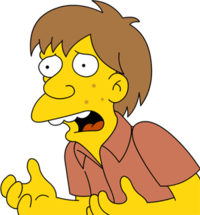
Directed by Orson Welles.
Starring Orson Welles and Oja Kodar.
Starring Orson Welles and Oja Kodar.
In a Nutshell: Orson Welles examines the nature of fraud.
In the opening scene of Orson Welles’ final movie, F for Fake, he presents himself as a sly magician, making a quarter disappear and reappear before a child’s awe-struck eyes. The self-described charlatan turns to the camera with a winking air, and promises the audience an “essay film” on the nature deception, adding that not everything in this film will be entirely truthful either. Guided by Welles’ rapid (and many times misleading) editing, the film examines four artists whose careers have skewered the line of authenticity; art forger Elmry de Hory, faux Howard Hughes biographer Clifford Irving, Pablo Picasso (in a story reenacted with Welles’ real-life partner Oja Kodar), and Welles himself.
In the opening scene of Orson Welles’ final movie, F for Fake, he presents himself as a sly magician, making a quarter disappear and reappear before a child’s awe-struck eyes. The self-described charlatan turns to the camera with a winking air, and promises the audience an “essay film” on the nature deception, adding that not everything in this film will be entirely truthful either. Guided by Welles’ rapid (and many times misleading) editing, the film examines four artists whose careers have skewered the line of authenticity; art forger Elmry de Hory, faux Howard Hughes biographer Clifford Irving, Pablo Picasso (in a story reenacted with Welles’ real-life partner Oja Kodar), and Welles himself.
The movie is structured as Welles’ inner monologue reminiscing on both the nature of fakery and his own success (which arose from his infamous War of the Worlds radio broadcast and fictionalized Hearst biography). Welles openly questions whether or not their fraudulent nature nullifies them as artists. He reflects with a jesting air, though his narration can never find a cohesive thread to rest on. It threatens to confuse the viewer out of Welles’ presentation, but is saved by the grace of his compelling subjects and personal observations on his own life. That is key to enjoying F for Fake; putting yourself entirely in the trust of Welles’ storytelling.
Throughout, Welles offers plenty of wry, but not cynical observations about his own esteemed and commercially unsuccessful career. It is this self-reflection that allows him to playful examine Hory and Irving in their chosen career of deception and unravel their motivations for doing so. This makes F for Fake a love letter to the art of moviemaking, how the distortion of reality uncovers hidden truth. At the end, Welles reveals the fakery perpetrated within the very film and is becomes clear that Welles the magician was no mere put-on. Free of the constraints of the normal documentary, F for Fake remains one of the most inventive non-fiction films and one of the better pranks of cinema.

No comments:
Post a Comment